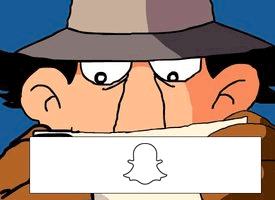– Matt Cutts in an interview with Eric Enge
An SEO Success Story Worth Sharing
I spend a good chunk of my time on my clients’ organic traffic performance. In fact, this year I’m proud to say that, while representing Miles, an agency that services destination marketing organizations around the world, I was able to help one client recover from a 30% drop in traffic following the launch of their new website in late 2011, and achieve record traffic levels within a year.

Within 6 months of project kickoff, the client recovered from a 6-month ~30% year-on-year loss in organic traffic. Over the next 6 months, from November 2012 to May 2013, we were able to hit record organic traffic levels, 100% over the baseline.
How we achieved record organic traffic volumes –
On-page improvements, content development, and off-page promotion.
In other words, it was hard work. Here’s what I did:
- Recommended tweaks to the client’s CMS setup so editors could manually manage page titles, meta descriptions, alt tags, etc.
- Revised the default rules for dynamic pages so page titles, headers and meta descriptions would be more relevant to the content they presented.
- Used data to inform planning and supplying content about visitors’ key interest areas.
- Worked with the client to make social media a key part of promoting new content so followers would know it existed.
- Recommended tweaks to the code base to tell a better story to search engines about where the content on the website lives and how it relates.
- Supported the client’s efforts to modify page templates and menus so information was easier to find and more usefully presented. This included the release of a responsive website.
We did all this while continuing always-on PR efforts, seasonal marketing campaigns and optimizing online advertising investments, which without a doubt also had an effect on organic visitor volumes.
The role link building plays in SEO
When I ran across Matt Cutts’ quote this morning, it struck a chord.
There are lots of best practices to follow and a host of little things a person can do to help a website perform organically, and together they can create some massive gains, but messages about the ranking algorithms often get mixed up. In those cases, organic tactics can become myopic, focusing on measures like links and rankings instead of the factors that drive them: audience appeal and quality.
Create a good customer experience
A big piece of organic performance is about creating a good customer experience—presenting information in a way that gives people what they want. Some of that’s about setting up your website so people can find the information they’re seeking easily. Some of it is about presenting them with the words and phrases they’re looking for while they’re quickly scanning the search results and your page. Another piece is about providing quality visual tools like photos and videos so people can get the information in a way that suits their style. If you do these pieces well, and that includes marking your content up in a way that search engines can understand it, then you ought to see organic search success.
It’s a lot like creating and selling a quality product. If there’s demand for it, and if it works well and gives people what they want, then you should be successful…as long as people have a way of knowing about it.
Treat links like PR
My advice for my clients right now is to think of link building as a form of PR. Traditional word of mouth will go so far, but if you want to launch something quicker than that, there are tactics you can use.
If the right influencers grab hold of your news and love it, then you’re on your way, but the key is starting with a quality product that people want. Poor products at best will get no traction on their PR, and at worst will see negative reviews and commentary hit the market, with influencers slamming their product for its lousiness. Unnatural link building can cause your website to experience the same effect, from both search engines and people.
I’m not going to say that links shouldn’t be part of the picture. They very much should be, especially as a performance benchmark, but the way we go about building these links—like all good marketing—needs to be about the customer. It’s about creating a quality product that people want, and want to share.
If you believe you’ve done that, do some PR:
- Tell people about your content by posting links to it on your blog or social media outlets.
- Include it in your email newsletter.
- Mention your content to key influencers with whom you have relationships. Invite them to give you feedback.
- Monitor what your followers do with your content. Invite them to give you feedback.
- Improve your product.
When you’ve created something people want and can use, those relationships will come back to help you. People will tell people about it, and that’s what the focus of your “link-building” efforts should be about.
Link building’s role in this project
In the year I worked on SEO for my client, links played a role, especially as part of partner relationships. Where there were content improvements made on the site, we encouraged our client to share updated resources and to tell their partners, but we didn’t buy directory links, and we didn’t push for links in marginally relevant places. Total external links to the site increased in the range of the upper 5-digits over the course of a year, not because we put them there, but because others had heard or seen remarkable content and chose to share it.
That’s what link metrics are meant for, and with the latest updates to Penguin, Google is getting and better at holding us to it.
BOTTOM LINE:
It’s time to stop thinking about link building first, and start focusing on creating a quality, useful product that people want to share.
 One platform that has been gaining ground especially with millenials over the past few years is Snapchat. If you’re not familiar with Snapchat, think of it as Vine meets Instant Messenger meets Mr. Quimby’s self-destructing messages for Inspector Gadget. As of August 2014, it had a user base of over 100 million users, 70% of whom were <25 years old.
One platform that has been gaining ground especially with millenials over the past few years is Snapchat. If you’re not familiar with Snapchat, think of it as Vine meets Instant Messenger meets Mr. Quimby’s self-destructing messages for Inspector Gadget. As of August 2014, it had a user base of over 100 million users, 70% of whom were <25 years old.



